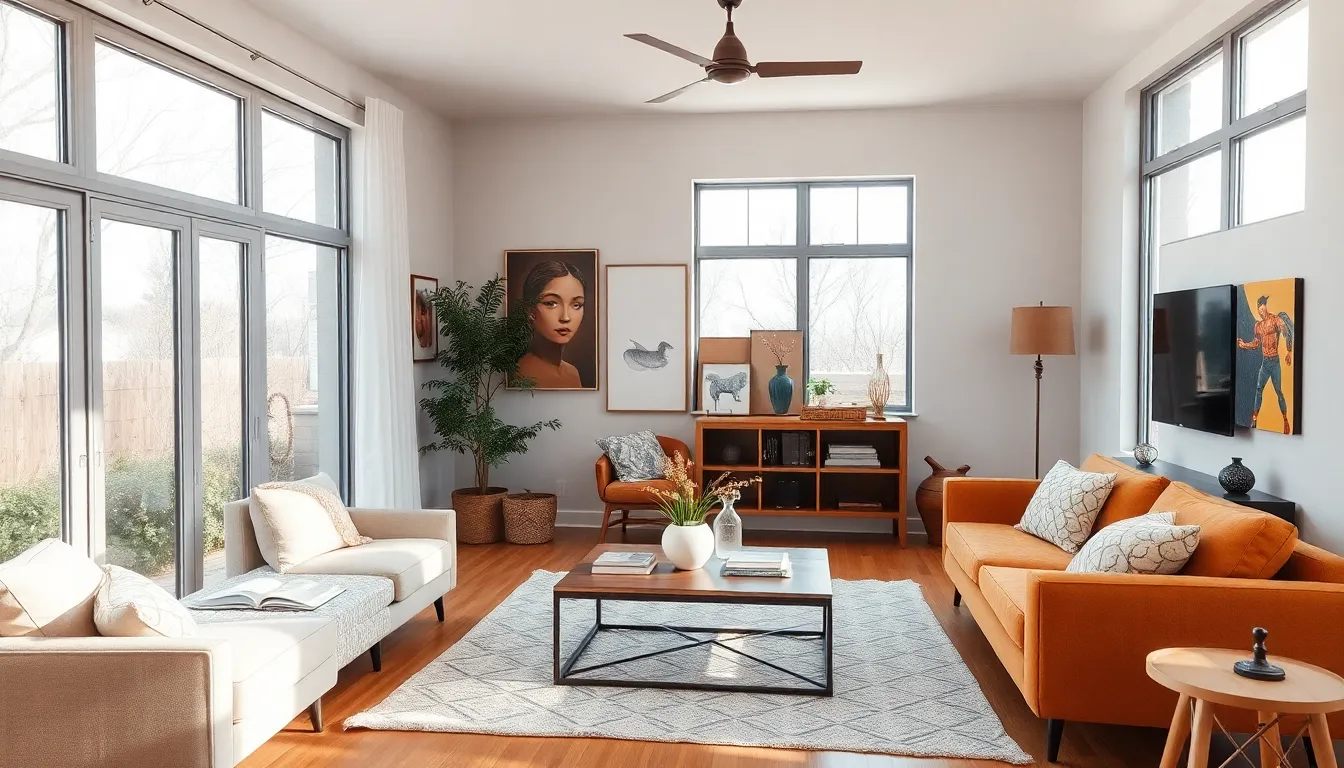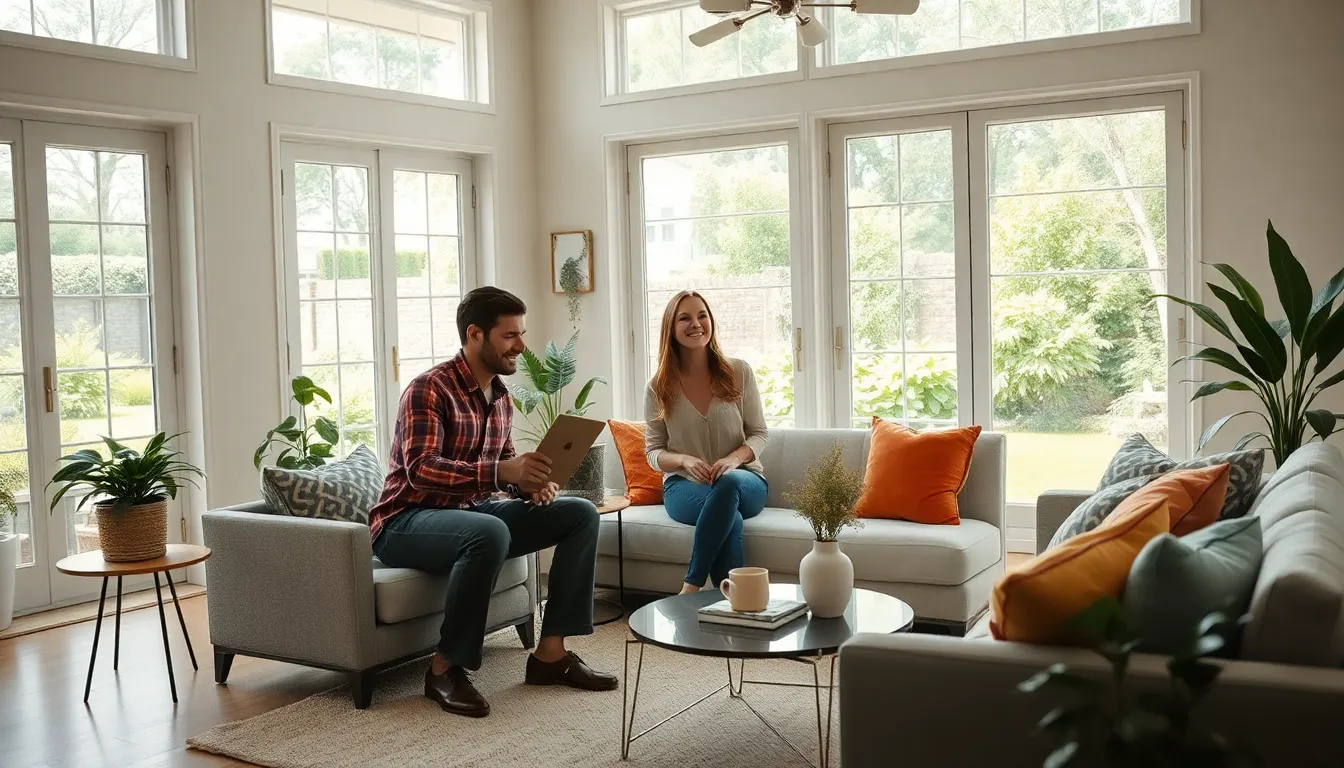Everyone dreams of the perfect home, but what does that actually look like? For some, it’s a cozy cottage tucked away in the woods, while for others, it’s a sprawling mansion with enough rooms to host a family reunion—every weekend. The allure of a dream home isn’t just about the size or style; it’s about the feeling it brings. It’s where laughter echoes, memories are made, and maybe even where one can hide from the in-laws.
Imagine waking up every day in a space that reflects your personality and passions. From quirky decor to state-of-the-art kitchens, dream homes are as unique as the people who inhabit them. So, buckle up as we explore the whimsical world of dream homes, where imagination meets reality, and maybe even discover how to turn those Pinterest boards into a blueprint for bliss.
Table of Contents
ToggleWhat Are Dream Homes?
Dream homes represent personal sanctuaries tailored to individual preferences. Often, these residences reflect personal tastes and lifestyles, encompassing a blend of aesthetics and functionality. Features can range from spacious kitchens to cozy reading nooks, transforming ordinary spaces into favorites.
Emotional connections play a crucial role in defining a dream home. Comfort, warmth, and happiness characterize these spaces, making them ideal retreats. Individuals often envision large windows that invite natural light, gardens that offer tranquility, or modern amenities that enhance daily life.
People prioritize unique elements that foster creativity and relaxation. Custom layouts, distinctive decor, or architectural styles tell personal stories. The vision may include open floor plans encouraging social interactions or intimate spaces for quiet reflection.
Variety exists in the ideal dream home configuration. For some, a minimalist apartment in the city suffices, while others yearn for sprawling estates in nature. It’s essential for aspiring homeowners to consider how their surroundings influence their well-being and happiness.
Understanding what constitutes a dream home can spark inspiration. Conducting research on design trends or gathering ideas from home improvement shows can guide decisions. Exploring innovative storage solutions or eco-friendly materials can enhance overall satisfaction with a living space.
Characteristics of Dream Homes

Dream homes embody personal sanctuaries filled with individuality and comfort. Each detail contributes to a unique living experience.
Architectural Styles
Diverse architectural styles appeal to various tastes, ranging from modern minimalism to classic elegance. Contemporary homes often feature clean lines and open spaces. Traditional designs focus on craftsmanship and familiar elements. Eco-friendly structures incorporate sustainable materials and energy-efficient technologies. Homeowners gravitate toward styles that resonate with their values and aesthetics.
Interior Design
Interior design transforms a house into a home through color, furniture, and layout choices. Cozy furnishings and warm color palettes enhance comfort and invite relaxation. Functionality remains essential with well-thought-out spaces for everyday activities. Artistic decor and personal touches reflect individual personalities and interests. Modern technology seamlessly integrates into design, improving convenience.
Outdoor Spaces
Outdoor spaces expand living areas, promoting relaxation and enjoyment. Terraces and patios create inviting environments for gatherings or solitude. Gardens enhance tranquility, supporting personal well-being and connection with nature. Landscaping choices reflect personal styles while fostering biodiversity. Additional features like outdoor kitchens or fire pits elevate outdoor experiences.
Popular Locations for Dream Homes
Dream homes can emerge in numerous popular locations around the world, often defined by lifestyle preferences and accessibility.
Urban vs. Suburban
Urban living attracts those who enjoy vibrant city life, cultural experiences, and convenience. Residents love the energy, dining options, and ease of commuting in cities. Suburban areas offer tranquility, spaciousness, and community-focused environments. Families often seek more room and proximity to schools in these settings. Diverse neighborhoods provide choices for varying lifestyles, with urban centers appealing to young professionals and suburban locales favored by families. The affordability factor also plays a role; many find suburban homes more budget-friendly compared to city apartments. Each locale offers unique advantages, making the decision a crucial one.
Coastal vs. Mountainous
Coastal dream homes captivate with stunning ocean views, fresh air, and recreational opportunities like surfing and boating. The atmosphere is often laid-back, creating ideal settings for relaxation and socializing. On the other hand, mountainous properties provide serene landscapes and adventurous living. Outdoor enthusiasts thrive here, enjoying activities like hiking, skiing, and mountain biking. Both coastal and mountainous regions boast appealing climates, although they differ significantly. Coastal locations may focus more on beach activities, while mountain areas offer tranquility and connection to nature. Ultimately, personal preference shapes the choice between these two breathtaking environments.
Personalizing Your Dream Home
Personalizing a dream home involves integrating both unique features and sustainable living practices that resonate with individual lifestyles and preferences. Tailored touches make spaces feel inviting and special.
Custom Features
Incorporating custom features enhances the uniqueness of a dream home. Consider designing built-in shelving to showcase personal collections or selecting cabinetry that fits specific needs. Innovative lighting enables ambiance adjustments, allowing homeowners to express creativity. High-performance appliances improve functionality while reflecting modern aesthetics. Adding smart home technology increases convenience and security, elevating everyday living experiences. Personal touches, such as bespoke furniture or art, create a sense of identity in the space.
Sustainable Living
Sustainable living shapes the future of dream homes, emphasizing eco-friendly choices. Energy-efficient appliances not only reduce utility costs but also benefit the environment. Incorporating natural materials like bamboo or reclaimed wood promotes sustainability while enhancing aesthetics. Installing solar panels can lead to significant long-term savings and lower carbon footprints. Well-planned landscaping, featuring native plants, supports local ecosystems and requires less maintenance. These considerations transform dream homes into responsible and environmentally conscious spaces, aligning comfort with purpose.
Creating a dream home is a deeply personal journey that reflects individual tastes and lifestyles. It’s about crafting a space that resonates with comfort and joy while incorporating unique features that enhance daily living.
As homeowners explore their options they should focus on blending aesthetics with functionality. Whether it’s through eco-friendly designs or innovative technology the goal remains the same: to build a sanctuary that nurtures well-being.
Ultimately the essence of a dream home lies in its ability to evoke positive emotions and create lasting memories. By embracing personal preferences and thoughtful design choices anyone can transform their living space into a true reflection of themselves.



